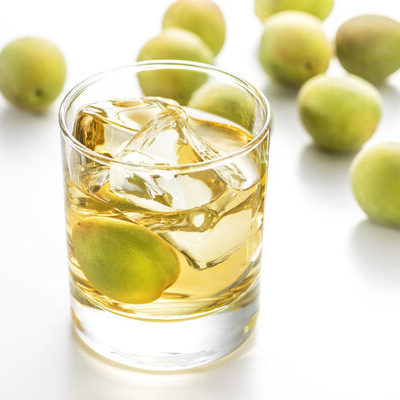
Plum Wine
What is Plum Wine?
Plum wine is an alcoholic beverage made from fermented plums and plum juice. However, it should not be confused with the Japanese liqueur Umeshu, which is made from the ume fruit. This fruit wine varies in color from peach to gold, depending on the variety of plum used.
The top 10 most popular wine brands include:
- Choya Ume Blanc
- Choya Umeshu
- Choya Kokuto Umeshu
- Takara Kinsen Plum
- Takara Koshu Plum
- Gekkeikan Sake
- Fu-ki
- Kikkoman
- Nakano BC Yuzu Umeshu
- Miyazaki
Origin of plum wine
This fruit wine has its origins in China over 2,000 years ago. During the 6th century, this fruit wine would be introduced to Japan, although it would only become popular there in the 17th century. Ever since then, it has been referred to as a traditional Japanese fruit wine. From Japan, this wine traveled to Europe and other countries around the globe. In recent years, this wine has steadily gained a reputation among fruit wine connoisseurs.
Nutrition
A 4 oz serving of this drink contains:

This wine is made from plums, which are rich in polyphenol antioxidants. These antioxidants help maintain healthy bones, prevent inflammation, and may reduce the risk of heart disease. However, the process of converting plums into wine removes antioxidants, as well as healthy fiber present in plums. As this drink contains alcohol, it may also cause side effects like drowsiness, vomiting, diarrhea, headaches, or difficulty breathing. It is recommendable to consume this fruit wine responsibly and in moderation.
Commercial production
The plum is the second most grown fruit in the world. It grows well in temperate areas. Plum wine is made by fermenting plums and their juice. First, the plums are washed, their stones removed, and then they are transferred to a container with sugar and water to ferment.
The fermentation process often takes about 3-4 months. Afterwards, the wine is transferred to another container to ferment for another ten months to develop the right taste. Some brands add additional sugar to improve the final taste of this fruit wine.
Application
Making fruit wine at home doesn’t require long months of fermentation. Simply wash and crush plums, add boiled water to a container, and then cover the plums and leave them for four days. Next, add yeast and leave the mixture to ferment for another four days. Finally, transfer the wine into a demijohn and leave for about three weeks to age. Although it ages well, it is best to store this drink in a closed bottle. Once opened, it should be kept inside the fridge.
Plum wine recipes
This fruit wine can be enjoyed in many ways. Here are some recipes to try:
FDA regulation
The FDA does not regulate plum wine. However, the Alcohol, Tobacco, Tax and Trade Bureau (TTB) has standards of identity for fruit wine, defining it as “wine produced by the normal alcoholic fermentation of the juice of sound, ripe fruit other than grapes”. The TTB stipulates that fruit wine which is wholly derived from one fruit must designate the fruit on the label, followed by the word “wine”. Some approved terms which may be used on this wine labels include: fruit table wine, fruit light wine, fruit dessert wine, and specially sweetened fruit wine.
References
“Plum Wine: Wine Without Grapes.” SecondBottle, Secondbottle.co, 19 Sept. 2018, www.secondbottle.co/plum-wine-wine-without-grapes/.
“Wine Labeling: Standards of Identity Class 5: Fruit Wine (Includes Cider, Perry, and Berry Wine).” TTBGov , Alcohol Tobacco Tax and Trade Bureau, www.ttb.gov/labeling-wine/wine-labeling-standards-of-identity?view=article&id=2950&catid=60.
